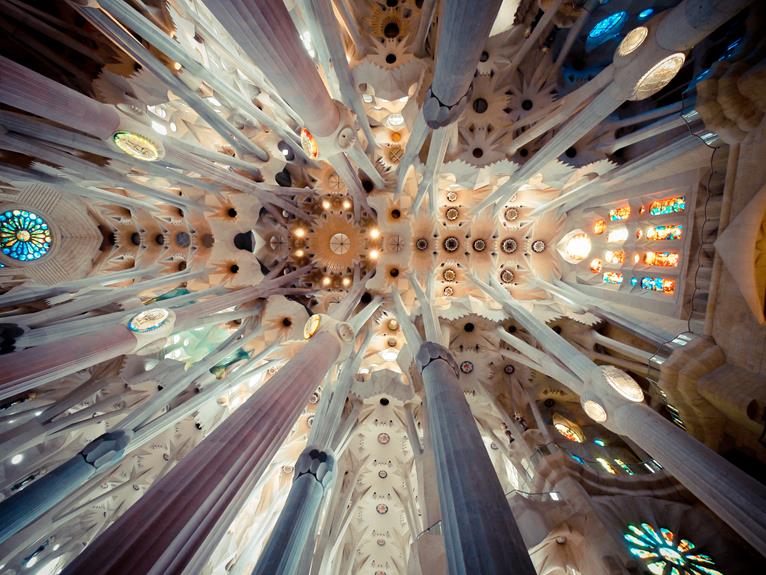
As I wander through the ancient streets of Spain, a sense of mystery and wonder fills the air. The legends whispered in these enchanting historical sites beckon me to uncover their hidden stories. From the Alhambra's tales of Moorish intrigue to the secrets of Spanish royalty in El Escorial, each site holds a captivating narrative. Join me as we delve into the myths of Roman engineering at the Segovia Aqueduct, explore the legends of the Holy Mountain in Montserrat, and uncover the stories of medieval knights and swordsmanship in Toledo.
Key Takeaways
Table of Contents
- The Alhambra in Granada showcases the architectural wonders of the Moorish civilization, with ornate halls, lush gardens, intricate carvings, mesmerizing tile work, and delicate archways.
- El Escorial, a grand palace and monastery, serves as the residence and final resting place for Spanish monarchs. It contains hidden treasures like a marble mausoleum and royal library, exuding awe-inspiring grandeur and magnificence.
- The Segovia Aqueduct, a remarkable feat of Roman engineering, was built in the 1st century AD. Legends suggest divine supervision and precise measurements in its construction, as it stretches over 800 meters with massive granite blocks held together without mortar.
- Montserrat holds significant spiritual significance and plays a role in Catalan folklore and mythology. It is home to the Black Madonna, a sacred statue that attracts pilgrims, and is surrounded by unique rock formations believed to be created by the hands of angels. Legends also speak of miracles and divine interventions associated with the site.
Alhambra: Tales of Moorish Intrigue
The Alhambra, a magnificent fortress in Granada, Spain, has always fascinated me with its tales of Moorish intrigue. The tales of Al Andalus, the ancient Muslim kingdom in Spain, have a sense of mystery and romance that captivate the imagination. The Alhambra is not only a fortress but also a palace, showcasing the architectural wonders of the Moorish civilization. As I stroll through its ornate halls and lush gardens, I can't help but marvel at the intricate carvings, mesmerizing tile work, and delicate archways. The Alhambra transports me to a different time and place, where I can almost hear the whispers of the past. It is a testament to the rich history and cultural fusion of Spain, and an experience that will forever remain etched in my memory.
El Escorial: Secrets of Spanish Royalty
As I delve into the secrets of Spanish royalty, El Escorial unveils itself as a grand testament to the power and opulence of the monarchy. Built in the 16th century, this magnificent palace and monastery served as the residence of the Spanish monarchs and the final resting place for many of them. Within its walls lie hidden treasures, such as the marble mausoleum where kings and queens are entombed alongside their ancestors. The royal library, with its vast collection of rare manuscripts and books, is a treasure trove of knowledge and history. As I explore the corridors and rooms of El Escorial, I can't help but be in awe of the grandeur and magnificence that once surrounded the Spanish monarchy. There is a sense of history and tradition that permeates every inch of this remarkable place.
Segovia Aqueduct: Myths of Roman Engineering
Exploring the marvels of Segovia Aqueduct, I am captivated by the myths surrounding the remarkable engineering prowess of the Romans. Roman architecture has always amazed me, but the Segovia Aqueduct takes it to another level. This ancient engineering marvel, built in the 1st century AD, stands as a testament to the ingenuity of the Romans. The aqueduct stretches over 800 meters, with its massive granite blocks held together without any mortar. It is said that the Romans used a combination of precise measurements and gravity to ensure the aqueduct's stability. Legends even suggest that the construction of the aqueduct was supervised by the gods themselves. Whether it's fact or fiction, the Segovia Aqueduct remains a magnificent example of ancient engineering and a true wonder of the world.
Montserrat: Legends of the Holy Mountain
I am fascinated by the legends surrounding Montserrat, the holy mountain, as it carries on the theme of enchanting historical sites in Spain. Montserrat holds a significant spiritual significance and plays a vital role in Catalan folklore and mythology. According to legend, the mountain was formed by the hands of angels, creating its unique and awe-inspiring rock formations. It is said that the mountain is home to the Black Madonna, a sacred statue that has attracted pilgrims for centuries. The legends surrounding Montserrat also speak of miracles and divine interventions that have occurred on the mountain. These stories have been passed down through generations, adding to the mystique and allure of this sacred place. Montserrat truly embodies the rich history and cultural heritage of Spain, making it a must-visit destination.
Toledo: Stories of Medieval Knights and Swordsmanship
When visiting Toledo, one cannot help but be captivated by the stories of medieval knights and their prowess in swordsmanship. Toledo, with its rich history of medieval warfare, holds tales of chivalry and honor that continue to fascinate visitors to this day. As I wander through the narrow cobbled streets, I imagine knights in shining armor, wielding their swords with skill and precision. The medieval warfare that took place within these walls is a testament to the bravery and skill of these knights. The code of chivalry and honor they upheld is still evident in the city's architecture and traditions. Toledo's stories of medieval knights and swordsmanship transport me to a time of valiant warriors and noble ideals, leaving me in awe of their remarkable legacy.
Frequently Asked Questions
What Is the Best Time of Year to Visit Alhambra?
The best time to visit Alhambra is during the off peak season when the weather conditions are pleasant. The peak season can be crowded, so I recommend going when it's less crowded for a more enjoyable experience.
Are There Any Ghost Stories Associated With El Escorial?
Yes, there are ghost stories associated with El Escorial. The historical significance of El Escorial makes it a perfect place for legends and tales to emerge, adding to its enchanting allure.
How Long Did It Take to Construct the Segovia Aqueduct?
It took several decades to construct the Segovia Aqueduct, which is one of Spain's engineering marvels. The construction timeline showcases the incredible skill and ingenuity of the builders who created this impressive structure.
Is There a Specific Pilgrimage Route to Reach Montserrat?
Yes, there is a specific pilgrimage route to reach Montserrat. The journey is filled with breathtaking landscapes and a sense of spiritual awakening as you follow the path to this sacred site.
Can Visitors Try on Medieval Armor in Toledo?
Yes, visitors can try on medieval armor in Toledo. It's an incredible experience that allows you to immerse yourself in history. The city is known for its historical reenactments, making it a must-visit destination.




Leave a Reply
You must be logged in to post a comment.